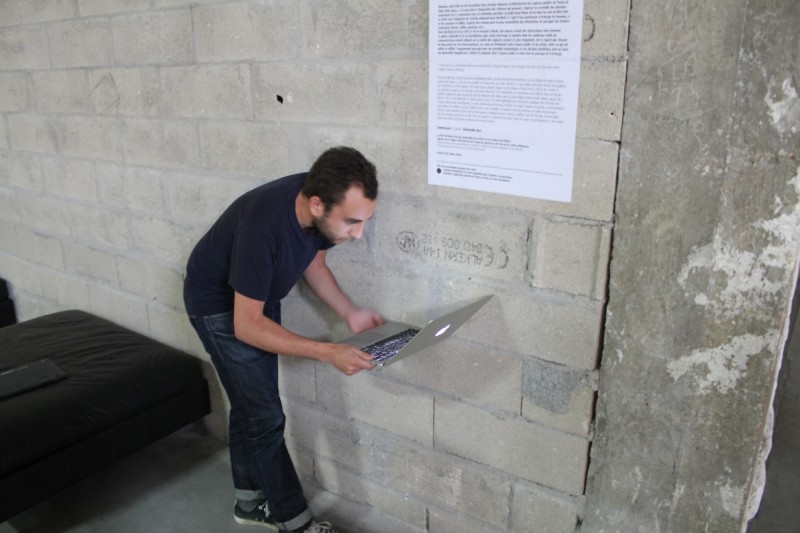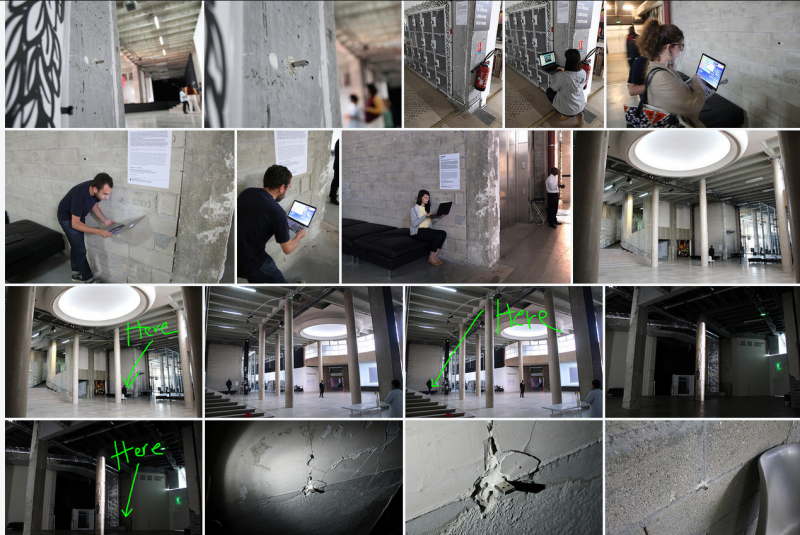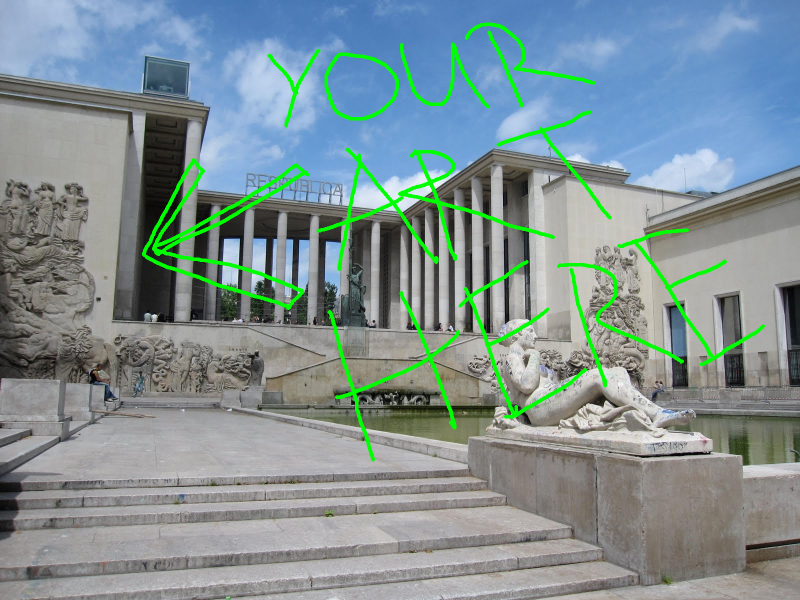Archive for June, 2015
Dead Drops at Palais de Tokyo
Dead Drops
at Palais de Tokyo, Paris
24/06/2015 – 13/09/2015
Intervention on the building.
Four Dead Drops are installed in different places of the museum. Visitors are invited to bring a laptop to connect to them.
“From the very beginning, I always encouraged people to leave their art on there. Especially for the MoMA dead drops, I made this blog post like, ‘If you want to be able to claim you had art in the MoMA, you can just go now and put something on there’.” Aram Bartholl
Dead Drops is a participative project started in 2010 by German multi-media artist Aram Bartholl. A dead drop or dead letter box is a term from the field of espionage and designates a method used to transmit information or items at a secret location. This anonymous peer to peer file-sharing network is based on USB keys cemented into a wall or other support in public space. The GPS coordinates of the site are then posted on the Dead Drops website. Each dead drop is installed empty except for a simple text file explaining the project. Users are invited to share documents, pics, digital works, films or whatever suits their fancy. A computer with a USB port is the only thing needed to connect to the not interconnected network. After having installed and referenced the first five dead drops in New York and on the web, Bartholl’s project unexpectedly took off, spreading internationally. As of May 2015, over 1520 Dead Drops had been submitted to deaddrops.com. Aside from its crazy concept, the project tries to rematerialise the dematerialised world of computers. Following the revelations by Edward Snowden, at a time when clouds and the debate on internet censorship and privacy have become hot topics, this project is now more then ever front and center on the political stage.
Born in Germany in 1972, Bartholl focuses on interrelations between the digital world and our physical surroundings. He obtained his degree in architecture from the University of arts in Berlin, where he lives and works. His artistic work has been shown in numerous festivals and exhibitions in museums and galleries. In 2011, five Dead Drops were part of the “Talk to me” exhibition at the MoMA in New York and a new facet of the project saw the day in 2013 with the installation of a DVD Dead Drop at Museum of the Moving Image in New York as well. Palais de Tokyo is the first French institution to welcome Dead Drops.
Cited from “Somewhere between Cyber and Real: An interview with Aram Bartholl”, by Jillian Steinhauer, 2012, http://hyperallergic.com
Links for all four Dead Drops:
Comment exposer au Palais de Tokyo ?
Dead Drops au Palais de Tokyo, à Paris
Vernissage public le lundi 22 juin à 21h
Comment exposer au Palais de Tokyo ?
- Apporter vos oeuvres sur votre ordinateur portable lors du vernissage
- Téléchargez-les sur l’une des 5 dead drops placées au Palais de Tokyo
- Dites à tout le monde que vous exposez au Palais de Tokyo
HOW TO GET YOUR ART IN THE PALAIS DE TOKYO
DEAD DROPS at Palais de Tokyo, Paris
Public OPENING, Monday 9:00pm 2015 June 22nd
How to get your art in the Palais de Tokyo
- BRING YOUR ART ON A LAPTOP TO THE GRAND OPENING.
- UPLOAD IT TO ONE OF THE 5 DEAD DROPS IN PALAIS DE TOKYO.
- TELL EVERYONE YOU HAVE ART IN THE PALAIS DE TOKYO.
PEBKAC – IMHO
PEBKAC IMHO
Haus of electronic Arts – HeK at Liste Art Fair
duration: 16.06.2015 – 21.06.2015
At Liste Art Fair Basel HeK – House of Electronic Arts presents four artistic positions:
Aram Bartholl, Constant Dullaart, Raquel Meyers and Evan Roth under the title PEBKAC IMHO.
“Search the web for ‘iPhone reverse product placement’, and you will find a clip from the first ‘Sex and the City’ movie (2008), in which the character Carrie gets handed an iPhone and shrieks; “I don’t know how to work this’. Shot the year the first Apple smartphone was released, the clip overtly illustrates our current relationship to technology. Carrie was not in the know, did not understand popular technology. Left at the altar, not in control of her life, not able to master new technology. We as the viewer do want to understand how technology works, want control, not be left at the altar, and get an iPhone.
‘Problem Exists Between Keyboard And Chair’, abbreviated to PEBKAC, is an expression used in tech support culture since the mid nineties. A derogatory term for a human error being the reason for the customer to seek assistance. Abbreviated to hide the pedantic position of tech support, creating an even larger social gap between them and the unwitting human sitting on the chair. By now, PEBKAC not only emphasizes that we are no longer bound to keyboards and chairs, but rather that society until now still struggles to define its relationship with networked technology. We might not always be the human error on the chair anymore, but we still have problems engaging with technology. Commercial interest has tempted many corporations to make technology more user friendly, a process in which technological possibilities are often hurdled to improve usability and profit. Now grandparents email, bandwidth is filled with ads, and nobody knows exactly how algorithms analyze our behavior. Perhaps the problem is sittinag on another chair, programming our technological culture to be the capitalist cultural environment it is today. And we should go back to the recent roots to research our relationship with tech. Go poetic, forensic, anthropologic, spiritual, basic. In any case, it will remain PEBKAC- In My Honest Opinion.” (Constant Dullaart)











